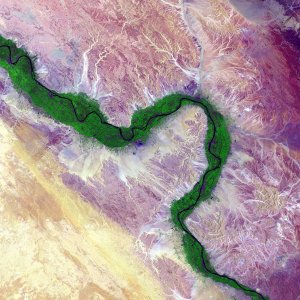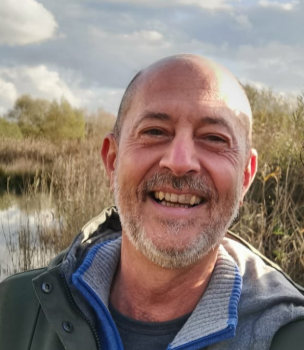
The “Water Framework Directive” (DIR 2000/60/EC) has radically changed the policies of European countries regarding water, which throughout the 1900s were mainly aimed at facilitating its use for human activities and protecting public health from the risks associated with pollution. The approach proposed by the Directive, in fact, places the “water body” (understood as the ecosystem consisting of a stretch of river or a portion of lake, sea or transitional waters) at the centre of attention and aims to reach its “Good ecological status”, through the implementation of measures aimed at reducing the impact of anthropogenic activities (polluting loads, alterations in the natural flow regime, changes in the morphology and vegetation of the riparian areas).
The “Floods Directive”, (DIR 2007/60/EC), which commits Member States to adopt measures to reduce the risk of flooding, also pays particular attention to ensuring the integration between risk reduction and the achievement of “good ecological status” of the ecosystems, where (Art. 7, par. 2) establishes that the flood risk management plans take into account the objectives of Directive 2000/60/EC.
Finally, the EU’s Biodiversity Strategy for 2030, which defines ambitious goals for the recovery of ecosystems in Europe over the next decade, asks Member States to restore continuity and natural flow in at least 25,000 km of rivers by 2030, removing barriers, restoring space for waterways and recovering wetlands and floodplains.
It is therefore evident that the European water and river basin management policy of the third millennium moves on a radically different wavelength from that which characterized the water sector in the twentieth century. In a nutshell, it is necessary to move from a policy based mainly on “grey hydraulic works” (dams, diversions, aqueducts, defences, embankments, bridles, sewers, treatment plants) to a policy aimed at three main challenges:
- river restoration with both ecological and hydraulic safety purposes, through the recovery and reconnection of alluvial plains, restoring the ecological functions lost following the transformations that have taken place in the last century;
- the improvement of the hydrological response and the “self-purification” capacity of the territory and of the secondary hydrographic network, favouring, both in urban and rural contexts, solutions that slow down surface runoff, favour infiltration and natural purifying functions both physical/chemical (sedimentation, adsorption) and biological (oxidation, nitrification, denitrification, etc.);
- a “demand side management” policy aimed at reducing withdrawals for civil, agricultural and industrial use and promoting the reuse of water and the precious elements contained in wastewater (nutrients above all).
In all three of these challenges, ecosystem restoration is a key issue, as they all aim at recovering the ecosystem services loss due to the artificialization of the landscape.
The first challenge explicitly regards the ecosystem restoration of the river corridors (the river bed and the surrounding floodplain), to benefit from the flood regulation service they naturally provide.
The second challenge interests the whole river basin and concerns the restoration of small patches or strips of natural ecosystems, diffuse over large urban or rural areas. In cities or agricultural areas, it is impossible to imagine restoring ecosystems on large surfaces. However, it is possible to promote the diffusion of small ecosystems (typically those we recognize as Nature Based Solutions, NbS) to recover the regulation services they offer: flooding risk reduction through wetlands, ponds, retention areas, detention basins, green roofs; infiltration through trenches and managed aquifer recharge areas; pollution prevention through wetlands and buffer strips. Allocating small portions of urban land (2/5%) to sustainable urban drainage systems (SUDS) or subtracting them from production in agricultural areas by creating natural water retention systems (NWRM) would allow the recovery of ecosystem services of great utility for the European population. It should be underlined that diffuse pollution due to farming activity cannot be managed by conventional grey infrastructure: thus, the only pollution prevention strategy relies on ecosystem services provided by NbS, such as buffer strips or treatment wetlands. This is why the ecological focus area envisaged by the Common Agricultural Policies (5% of arable land subtracted from production to provide ecological services) should be localized and conceived to provide, beside the biodiversity support benefit, also the diffuse pollution control service.
Even in the third challenge, that of reducing consumption and reusing water, the ecosystems restored through the creation of NbS can play an important role, particularly in urban contexts. To allow for a significant reduction in urban consumption, it is necessary to revolutionize the water supply system, currently based on a single source: drinking water distributed through urban aqueducts. Ideally, buildings of the third millennium should be supplied from three distinct sources: drinking water, rain water (of good quality but low in salts), purified greywater (for less noble uses such as toilets flushing and irrigation). Both rainwater and greywater can be effectively treated using NbS, small ecosystems restored in the urban environment and designed for this use.
The NICE project will generate knowledge for the design and implementation of Nature-Based Solutions with the goal of closing urban water loops. More in detail the project aims to:
- develop green walls and vegetable rooftops obtaining high quality water for reuse from greywater;
- develop a new generation of enhanced rain gardens for stormwater & combined sewer overflow systems based on the R&D of treatment wetlands with reactive media and forced aeration;
- develop wetlands for wastewater based on the R&D of different combinations of vertical and horizontal models, with absorber and low permeability media in combination with plants capable of enhanced pathogen removal and bioaugmentation strategies, resulting in high-quality water for reuse.
In the urban environment, the widespread availability of water fed NbS (such as green roofs, green walls and wetlands) provides an additional service: cooling during the hot season thanks to evaporation and evapotranspiration processes.
Bringing nature back to our cities and cultivated fields by spreading NbS cannot restore pristine habitats, but it will certainly recover a significant part of the services provided by ecosystems.
- Giulio Conte, biologist, Project Manager at IRIDRA

